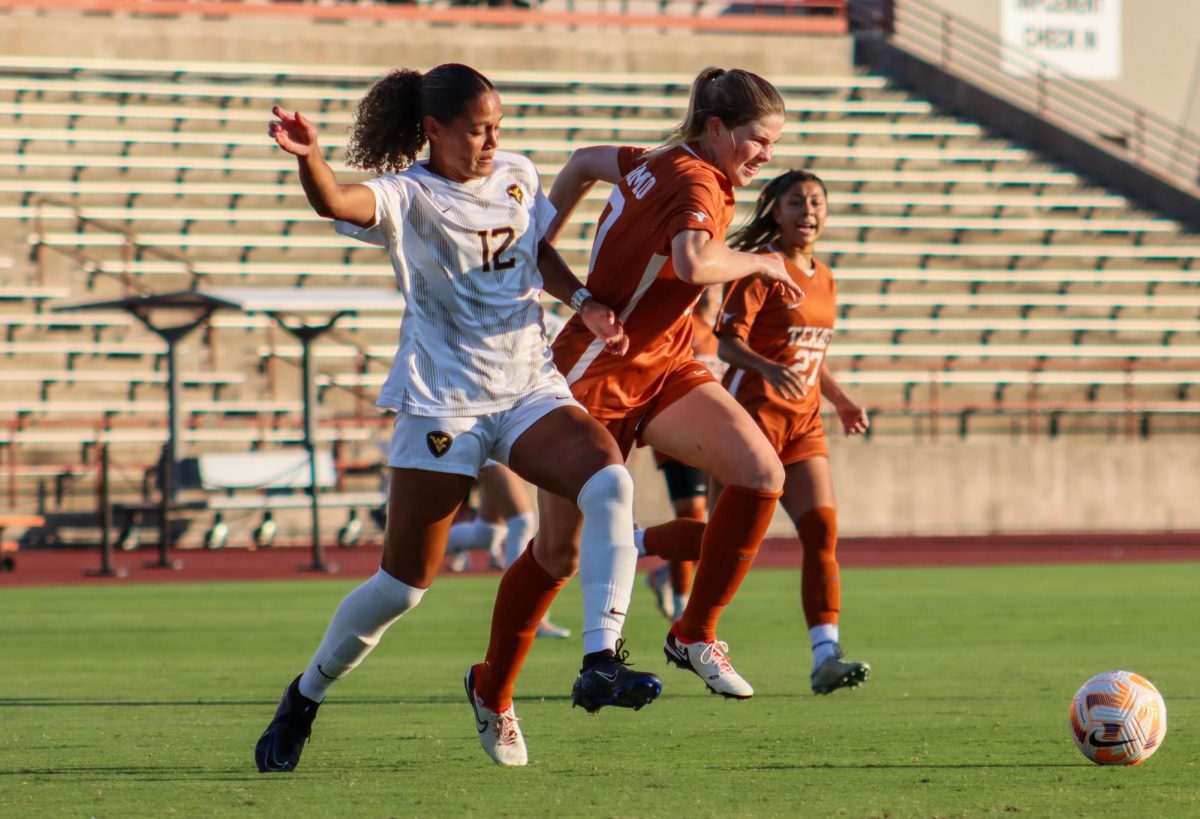Many don’t think of golf as a team sport. The golfer stands alone on the green, putter in hand, focused on the path to drop the ball into the hole — it all seems very solitary.
But just a few yards away another set of eyes are also glued to the ball, waiting in anticipation for the strike that could determine over or under par. That shot means just as much to the golfer as it does to the other part of the team: the caddy.
Caddies not only carry the clubs but take on different roles to create the best dynamic they can with a golfer. For Carl Jackson, who has caddied for Ben Crenshaw, UT alumni and two-time Masters champion, for the last 39 years at Augusta, his role on the course is to be the bottomless suggestion box and mental stabilizer for Crenshaw.
“You know, he has to execute. And I have to be a professional and let my experiences come out of me,” Jackson said. “I could not be afraid. I could not show any doubt in what I was suggesting because that would cause him to show doubt.”
Jackson said his goal as a caddy is to make sure his golfer is comfortable with his next shot.
“It begins with mutual respect for one another. The caddy feels the pressure too,” he said. “We look out for each other out there. Even on a rainy day, he’ll look back, and I’m walking gingerly trying not to fall down, and I tell him, ‘Watch that area there,’ or ‘Be careful over there.’ I have to stay focused on what my duties are and not make a mental mistake.”
Barbara Puett, six-time Austin City Golf champion and UT golf instructor, said the golfer and caddie relationship works a lot like a coach’s and a player’s relationship would; it’s all about teamwork.
“It’s a relationship that works off of support,” she said. “Anytime you have support in any endeavor you do, you’ll do better because you have support backing you up. It’s an important relationship for the success of the player.”
Much like Crenshaw found his support in Jackson, another famous Austin golfer, Tom Kite, found what he was looking for in his long-time caddy, Sandy Jones. Kite has won multiple major championships since turning pro in 1972 after being in the Texas golf program under legend Harvey Penick.
Jones is unique. She is in the minority of being a woman caddy but said it’s helped her have an edge. Jones has been with Kite for the past 14 years but said she’s changed her approach over the years.
“When he got out on the champions tour, he was down low, and he needed somebody to bring him up. He wanted his new caddy to be able to pep him up so that’s kinda how we started,” Jones said. “Over the years, of course, it’s changed, and I’m not so much a cheerleader anymore. I watch his swing and tell him what I think he did wrong.”
It’s the caddy’s job to learn the course and read the signs whether it be from watching others or watching the weather. Jones said the key is to make sure her suggestions sound confident, so she can instill that same confidence in Kite.
“Yes of course there is knowing the yardages and everything, but that just becomes second nature when you go out and walk the golf course,” she said. “But when he asks me what club to use, I’m going to be precise and say the 7-iron instead of wiggle-wobbling around.”
Both caddies, Jackson and Jones, have grown to be a part of the families of their golfers.
“Our friendship has led to something more than a friendship. [Ben and his wife] have treated me beautifully,” Jackson said. “I remember when each one of those kids was born, and when they see me they hug me like I’m their uncle or something.”
Jones still has Friday dinners with Kite even since his wife passed away earlier this year.
“I’ll say, ‘I’m just a caddie,’ and Tom will tell me, ‘Don’t say that. You’re not just a caddie,” Jones said.




















